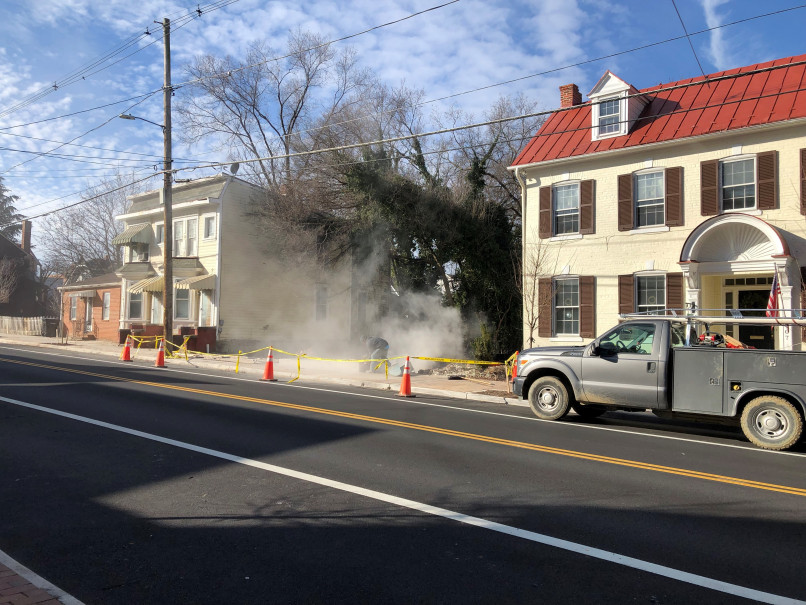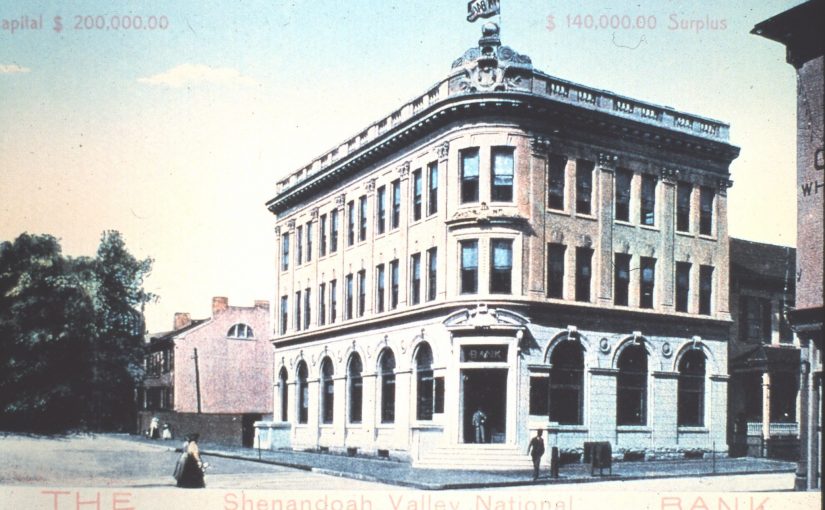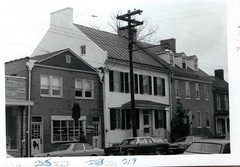To go with our post last week, a second typed manuscript fell free of a scrapbook during moving. This is a partial transcription of the article “Preserve Early America in Virginia,” written by Lucille Lozier and Chi-Chi Kerns in 1968. The manuscript was sent to six magazines for potential publication. It was divided into three sections, so only the first portion which forms the most cohesive narrative is included today. We may revisit the next two sections in a future blog post.
Preserve Early America in Virginia
“We set out early, then traveled up to Frederick Town,” wrote George Washington in March, 1748, then a lad of 16. “We cleaned ourselves (to get rid of the game we had catched the night before), took a review of the town and thence returned to our lodgings where we had a good dinner…and a good feather bed with clean sheets, which was a very agreeable regale.”
This was the beginning of George Washington’s association with Winchester, then called Frederick Town.
The property on which this same inn rested, which was conveyed by Lord Fairfax to William Cocke, owner of the inn, was designated for preservation October 15, 1967. A fine old stone house, built in 1792, now stands there. This house is the first building in Winchester to be marked for preservation. A bronze plaque was placed on this home at the dedication ceremony, indicating it will be preserved, and the home is so listed by Preservation of Historic Winchester, Inc.
At the time of Washington’s coming here, Winchester was the principal frontier post in the Shenandoah Valley. Washington, whose brother, Lawrence, married a cousin of Lord Fairfax, was sent here by the latter to survey Lord Fairfax’s vast estate of over 5,000,000 acres of unsettled land. He spent the next four years in this activity, and his headquarters attracts many tourists today.

There seems to be an almost overwhelming urge, in the name of progress, to demolish and destroy relics of our country’s history and early cultural development. The era of concrete is upon the land, and ruthlessly, buildings of period architecture and antique beauty fall prey to the bulldozer. Feelings of pride in our past heritage seem to be swept aside in pursuit of the almighty dollar.
In the fall of 1963, a group of concerned citizens in Winchester, distressed and alarmed by the demolition of an increasingly large number of antique buildings in the area, assembled with a common desire to find some way to prevent the continuous destruction of their heritage. Winchester is one of the most historical cities of our nation and the oldest town west of the Blue Ridge Mountains, a distinction of which they feel every citizen in the community should be justly proud.
Out of such concern grew an organization, the members of which were determined to preserve as many as possible of the old homes and buildings in Winchester which are historically important and architecturally interesting. These citizens formed an active group dedicated to providing a qualified and responsible organization capable of carrying out their objectives.
Those who belong to the organization have been successful in having the City Council pass an ordinance which enables them to proceed with their business of preservation. The name of the organization is “Preservation of Historic Winchester, Inc.”
The members of PHW, Inc. have undertaken a project which will bring to a halt the impetuous tearing down of their historically invaluable buildings which, once gone, can never be replaced. They are trying to preserve as many as possible of the important buildings in Old Winchester which were built before 1860. Under their plan, the owner of a building may request its preservation. If the building qualifies, an attractive bronze marker, or plaque, specially designed, is placed on the structure to indicate that it will always remain a part of Old Winchester.
In recent years there has been some interest among members of garden clubs and other citizens of Winchester in improving the appearance of certain local historic buildings by beautifying their surroundings with appropriate planting of trees, shrubs, flowers, vines and ground covers. Since the preservation of an old building is not authentic without the restoration of the gardens and lawn which enhanced it, the Historic Winchester group would hope to work hand in hand with all those who wish the picture to be complete. It is anticipated that out of growing concern for saving these buildings will develop also a strong desire on the part of Winchester’s citizens to make their town more attractive with beautiful landscape architecture.
Members of the newly-formed organization look forward to the future with great excitement. They expect, as a body, which will be fully qualified for the activity, to solicit and accept money and property in the form of endowments and bequests. These gifts will be classified as charitable and may be listed as such on income tax forms of all donors.
The people of Historic Winchester wish to spread the news of their thrilling adventure to all Virginians, and, indeed, throughout the nation. Anyone interested in the organization can contact us at 540-667-3577, phwinc.org@gmail.com, or at our office Monday-Friday at the Hexagon House, 530 Amherst Street, Winchester, VA 22601.





